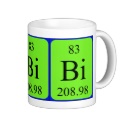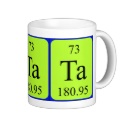|
|
Reference type: Journal
Authors: Lieberzeit PA, Afzal A, Rehman A, Dickert FL
Article Title: Nanoparticles for detecting pollutants and degradation processes with mass-sensitive sensors.
Publication date: 2007
Journal: Sensors and Actuators B: Chemical
Volume: 127
Issue: (1)
Page numbers: 132-136.
DOI: 10.1016/j.snb.2007.07.020
Alternative URL: http://www.sciencedirect.com/science/article/B6THH-4P59X4G-7/2/01e5f37b7882decba1a7e0cd5c9f627d
Abstract: Compared with thin films, nanoparticle layers as coatings for QCM offer substantially increased interaction areas and sensitivities with favourable response times. Molybdenum disulphide (MoS2), e.g. has turned out to be a highly suitable material for interacting with thiols. The resulting materials are sufficiently soft according to Pearson to bind sulphur containing compounds reversibly. Depositing MoS2 nanoparticle submonolayers (particle size 200-300 nm) leads to an increase in sensor response by a factor of ten compared to a pure gold layer. Additionally, the nanoparticle layers show fully reversible sensor signals. Particle synthesis can also be combined with the molecular imprinting approach: by a precipitation technique, it is possible to generate molecularly imprinted TiO2 particles for engine oil degradation measurements. Compared with deposited thin layers, particles incorporate oxidised compounds from lubricants by a factor of two better
Template and target information: degraded engine oil
Author keywords: Engine oil degradation sensing, Thiol sensing, nanoparticles, QCM
|


 Element 83 mug - Bismuth
Element 83 mug - Bismuth







 Element 73 mug - Tantalum
Element 73 mug - Tantalum







 SMI mug tiled pink
SMI mug tiled pink






